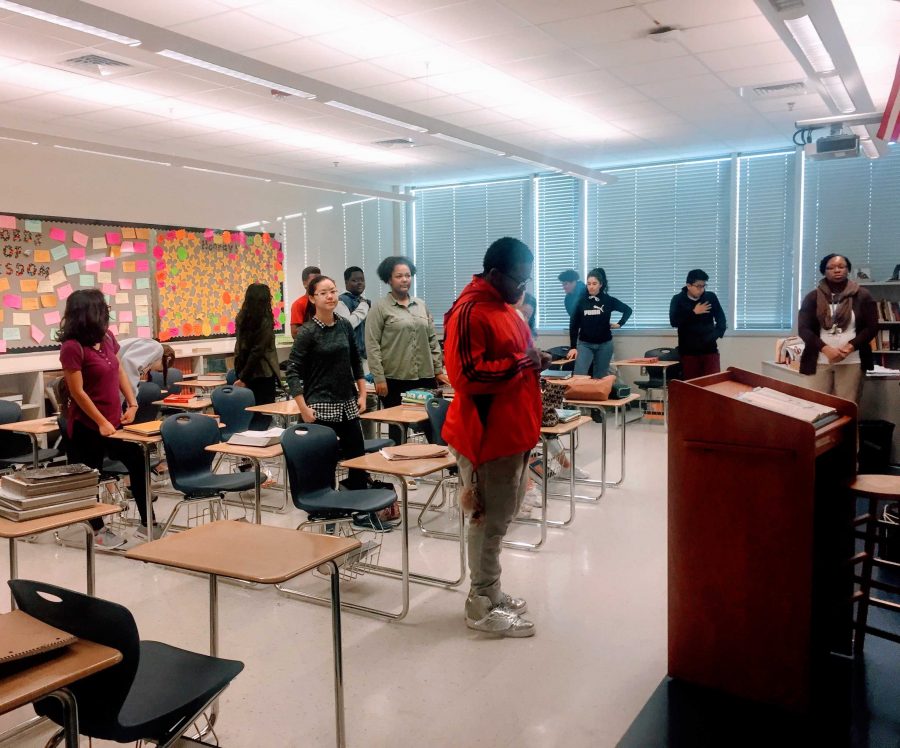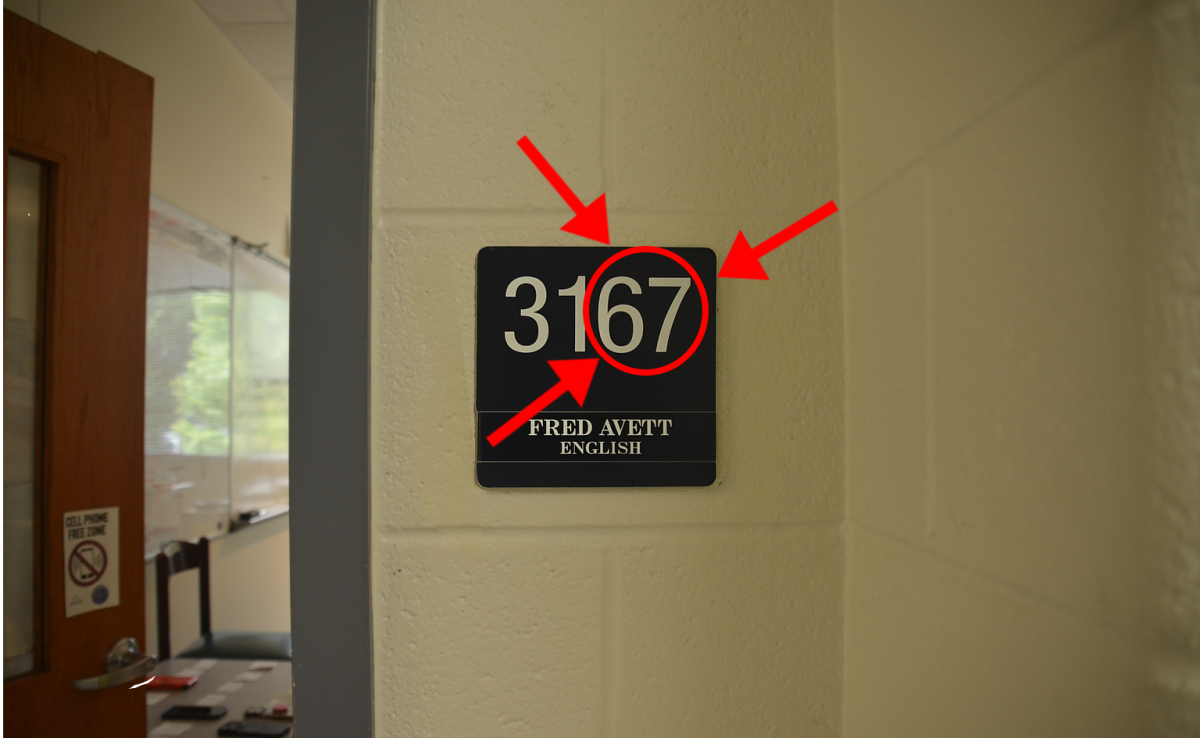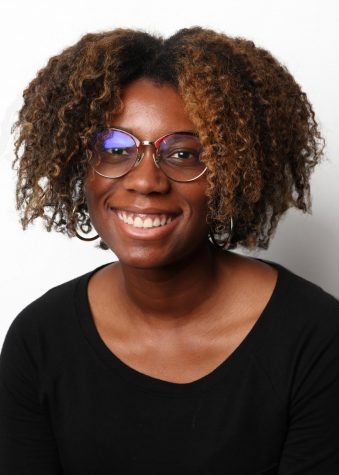Last October, Chamblee teachers participated in a survey regarding how their students behaved during the morning pledge and moment of silence. However, since that time, more students are not standing for the Pledge of Allegiance.
English teacher Yasmin Anderson brought it to the attention of the Blue & Gold that since the article ran, that more and more of her first period students did not stand up. She wondered if anything similar was happening in other classes.
“I kept watch because of the political climate and the change of what was going on in politics and I noticed with the students that maybe with [professional] athletes doing it [not standing] and if it was going to transcend into the students and I think I noticed that now– students taking that stance,” said Anderson.
Last semester’s survey revealed that students felt that when they stood, it was out of respect or habit. When students stood, teachers observed that the majority of their students did not place their hands over their hearts or recite the pledge, and those that did not stand were quiet and respectful to those that did.
This semester’s survey uncovers similar evidence. Teachers still saw that students usually did not recite when they stood, but remained quiet when they chose not to.
Teachers kept count of the numbers of students that stood and those that did not. The numbers vary from class to class, but the majority ultimately lies with the students that stand. In a sample size of twenty-six teachers with first period classes and six hundred forty-six students, five hundred eleven of those students stood for the pledge.
This could be because on several of the surveys, no one sat because students were not allowed to sit. Teachers indicated that they required their students to stand. One teacher that requires their students to stand claims they are cooperative, but their enthusiasm is mediocre.
The number for standing students could be high because of habit.
“I was told and shown at a young age what to do because I am supposed to be respectable during the time the pledge is said and I guess I never stopped. I see others getting up and I’m like ‘Oh, guess it’s that time again,’” said sophomore Torsa Rahman.
However, the number of students that sit during the pledge has gone up. It wasn’t a huge spike in the data, but a shift nonetheless.
Since the October article was published, things have changed. A very controversial president was elected and inaugurated, political reforms on immigration, trade, and the official advisors have started to set in, and social movements persist.
“At the beginning of the year, I would stand occasionally, but with all the social movements, like Black Lives Matter and especially since the election of Trump, I don’t want to stand and honor the flag,” said sophomore Jalen Beckford.
Also, a semester has ended. Students got through finals and looked ahead to winter break, only to have to come back to school for another semester to do it all over again.
“Second semester hit me hard when I came back from winter break,” said sophomore Safiya Duncan. “I’m tired and stressed and doing homework all the time. I don’t stand sometimes, a lot of time, because I’m just trying to relax for a few more minutes before the day starts or finish a little bit of homework in the morning.”
Teachers have a different perception on standing during the pledge.
“Students today live under the impression that they can do whatever they want,” said business education teacher Lanice Jones. “They feel entitlement– the world owes me something.”
English teacher James Wallace does not believe his students should stand if they do not want to, though he does stand each morning. He claims that standing and making a pledge is worshipping a false idol.
James Demer, English teacher, said that students and teachers say the Pledge of Allegiance daily, but that a pledge only has to be made once, so there is no point in saying it every day.
Nevertheless, the Pledge is still said over the intercom and the majority of the students still stand daily.








